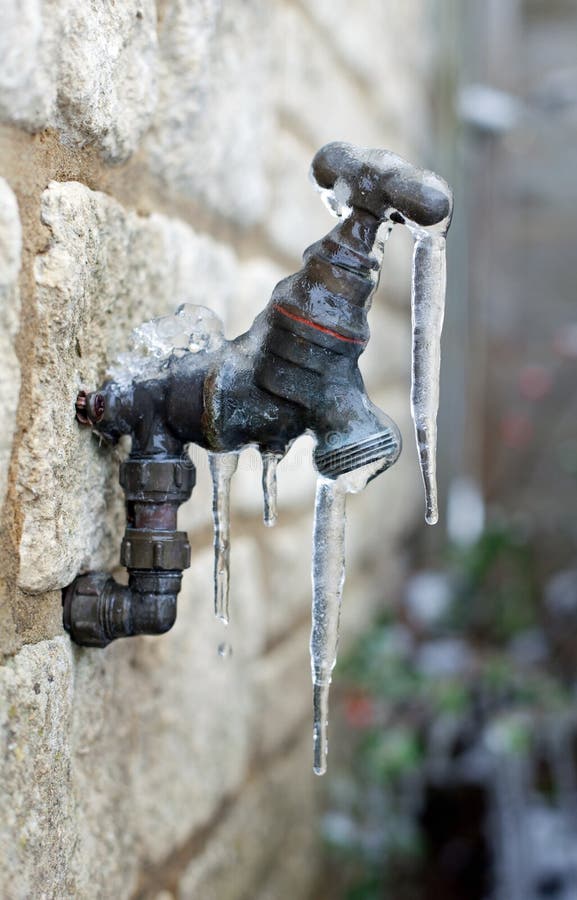Protecting Your Pipes from Cold Weather: Top Tips
Protecting Your Pipes from Cold Weather: Top Tips
Blog Article
Just how do you actually feel about 6 Ways to Prevent Frozen Pipes?

Cold weather can ruin your plumbing, particularly by freezing pipelines. Below's how to prevent it from occurring and what to do if it does.
Introduction
As temperature levels drop, the threat of icy pipelines increases, possibly leading to costly fixings and water damages. Understanding just how to prevent frozen pipelines is essential for home owners in cold climates.
Prevention Tips
Shielding vulnerable pipes
Wrap pipes in insulation sleeves or make use of warmth tape to protect them from freezing temperatures. Focus on pipes in unheated or exterior areas of the home.
Heating techniques
Keep interior areas effectively heated up, specifically locations with pipes. Open cupboard doors to permit warm air to distribute around pipes under sinks.
Just how to identify frozen pipelines
Look for reduced water flow from faucets, uncommon odors or noises from pipelines, and noticeable frost on subjected pipes.
Long-Term Solutions
Structural adjustments
Take into consideration rerouting pipelines away from outside walls or unheated locations. Include extra insulation to attic rooms, basements, and crawl spaces.
Updating insulation
Buy high-quality insulation for pipelines, attic rooms, and walls. Appropriate insulation helps preserve regular temperatures and minimizes the danger of icy pipelines.
Safeguarding Exterior Pipes
Garden pipes and exterior faucets
Separate and drain pipes garden hose pipes before wintertime. Install frost-proof spigots or cover outdoor faucets with protected caps.
Recognizing Icy Pipelines
What creates pipelines to ice up?
Pipes freeze when exposed to temperatures below 32 ° F (0 ° C) for extended durations. As water inside the pipes freezes, it increases, taxing the pipeline walls and potentially creating them to rupture.
Dangers and problems
Icy pipes can bring about supply of water disturbances, residential property damage, and pricey repair services. Ruptured pipes can flooding homes and create substantial structural damage.
Indicators of Frozen Pipes
Determining icy pipelines early can avoid them from bursting.
What to Do If Your Pipes Freeze
Immediate actions to take
If you presume frozen pipelines, keep faucets available to relieve stress as the ice thaws. Use a hairdryer or towels soaked in warm water to thaw pipelines slowly.
Conclusion
Avoiding frozen pipelines calls for proactive steps and quick feedbacks. By recognizing the reasons, indicators, and safety nets, home owners can safeguard their plumbing during cold weather.
5 Ways to Prevent Frozen Pipes
Drain Outdoor Faucets and Disconnect Hoses
First, close the shut-off valve that controls the flow of water in the pipe to your outdoor faucet. Then, head outside to disconnect and drain your hose and open the outdoor faucet to allow the water to completely drain out of the line. Turn off the faucet when done. Finally, head back to the shut-off valve and drain the remaining water inside the pipe into a bucket or container. Additionally, if you have a home irrigation system, you should consider hiring an expert to clear the system of water each year.
Insulate Pipes
One of the best and most cost-effective methods for preventing frozen water pipes is to wrap your pipes with insulation. This is especially important for areas in your home that aren’t exposed to heat, such as an attic. We suggest using foam sleeves, which can typically be found at your local hardware store.
Keep Heat Running at 65
Your pipes are located inside your walls, and the temperature there is much colder than the rest of the house. To prevent your pipes from freezing, The Insurance Information Institute suggests that you keep your home heated to at least 65 degrees, even when traveling. You may want to invest in smart devices that can keep an eye on the temperature in your home while you’re away.
Leave Water Dripping
Moving water — even a small trickle — can prevent ice from forming inside your pipes. When freezing temps are imminent, start a drip of water from all faucets that serve exposed pipes. Leaving a few faucets running will also help relieve pressure inside the pipes and help prevent a rupture if the water inside freezes.
Open Cupboard Doors
Warm your kitchen and bathroom pipes by opening cupboards and vanities. You should also leave your interior doors ajar to help warm air circulate evenly throughout your home.

I am very interested in How to Prevent Your Pipes From Freezing and I'm hoping you liked our piece. So long as you liked our article plz don't forget to pass it around. Thank you for being here. Please come by our website back soon.
Schedule A Service Call Report this page